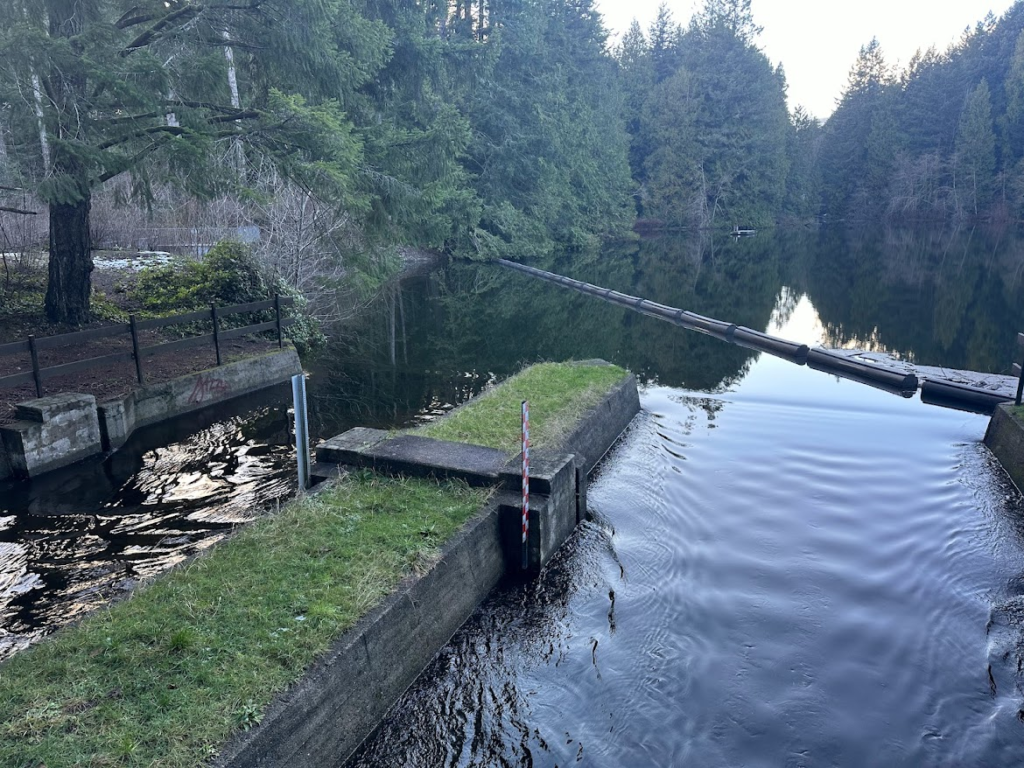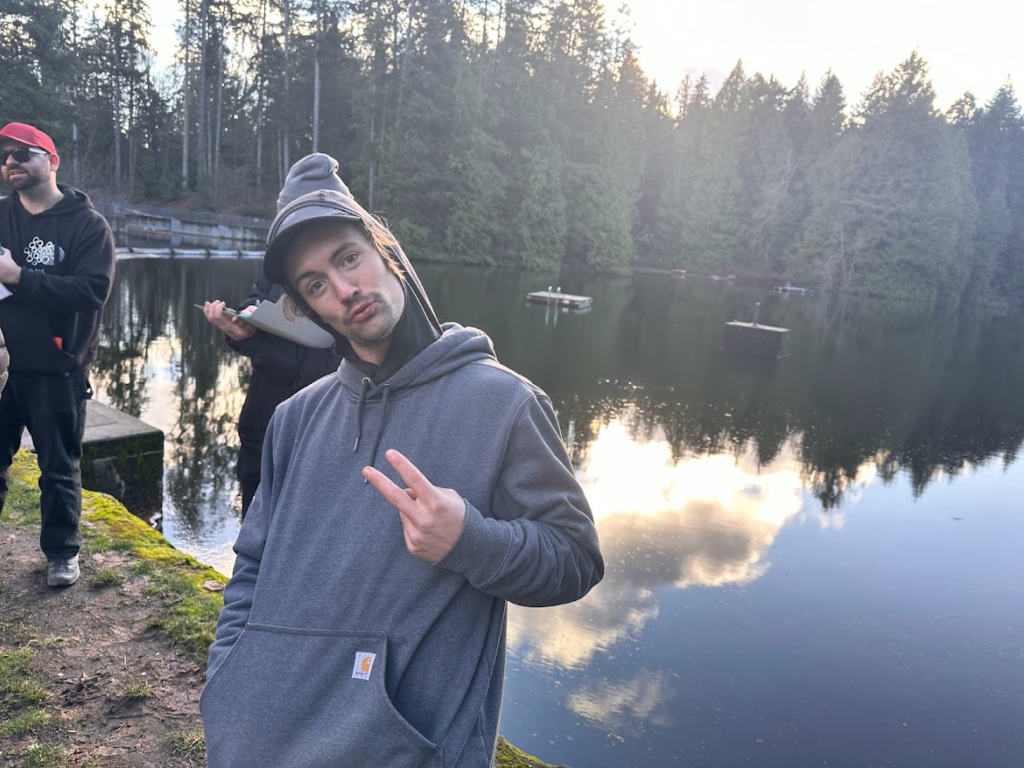Intro
The purpose of this field trip was to learn about and assess a real-life environmental issue that is occurring just a short walk away from VIU. In the field, we met Ewan and Mike from the regional district of Nanaimo who gave us an in-depth tour of the local park as well as background information into the logistics behind adaptation of areas with environmental concerns. The tour began in the parking lot near the lower dam where we discussed the park as a whole as well as the issues that were faced during the large rain event that occured in 2021. We then meandered our way up to the middle dam where evidence of flood water damage could be seen on the spillway.
Background
The Colliery Dam Park conists of three man-made lakes (ie. reserviors) that were created in 1910 and used as in coal mining practices. In the 1970’s, the site was turned into a park and is enjoyed by many locals as an area to walk their dogs or take a nice little dip when the weather is nice. I consider myself one of those individuals, during the summer I have spent many days lounging on the shoreline and taking lil dips to cool off (water quality might be a lil issue but whatever… I’ll live).
In the past decade, more care has been taken to assure saftey to the nearby community in the event of catastrophe. Recently, analysis of the Colliery Dams by the provincial gonvernment unveiled the danger of these structures. It was found that there is a high vulnerabilty of dam failure as well as very high downstream consequences. These two factors made this site one of the most at risk dam sits in the whole province.

Observations
- The dams were created in the early 1900’s and are of relatively unkown composition, most likely sediments such as clays and mine waste rock. The composition of the dams is what creates such a high risk for dam failure. Drill testing is planned in the near future to determine the make up of the dams.
- The flooding event of November 2021, provided the city with insight on how the site will react to heavy precipitation. In the lower dam, the one at most risk of effecting the community, there are 2 spillways as well as a new diverging channel. The newest spillway is in the shape of a W, rather than a curve, in order to increase surface area which allows more water to effictively evacuate the system. Overall, the spillways managed the water relatively well and the possibilty of over topping was mitigated.

- The talk of reservoirs led to the discussion about the water inventory of Nanaimo. It was revealed the Nanaimo has very abundant water resources around the city in the form of other lakes such as Westwood Lake. According to calculations, the resource should suffice until 2050 (I think that was the stat). However, nearby communities may be in need of water from the community if drought conditions continue to affect the province (which they most likely will).
- With Ewan and Mike working for the District of Nanaimo, we got an inside look into regulations, as well as community engagement. In this case, the community had a very strong opinion on what they wanted the outcome to be. The communtiy valued the recreation site and believed it should remain the same due to it “always being like that”. Basically the city had three options: take down the dams and restore the creek to its natural state (safest route), re-engineer the dams to make them safe if an earthquake occured (most expensive), or to leave it as is with ongoing mitigation and assesment (riskiest). In the end, the district decided on the last option.

Conclusion
This field trip was a great introduction into the field of environmental geology as it provided insight into local issues that are relevent to us. Mike and Ewan were very in-depth and passionate about the in’s and out’s of what goes on during environmental hazard decisions. Learning about how much the communities ideas affect a decision was really eye opening to me, as it shows how environmental decisions aren’t always based on pure science but rather cost and public opionion as well.
